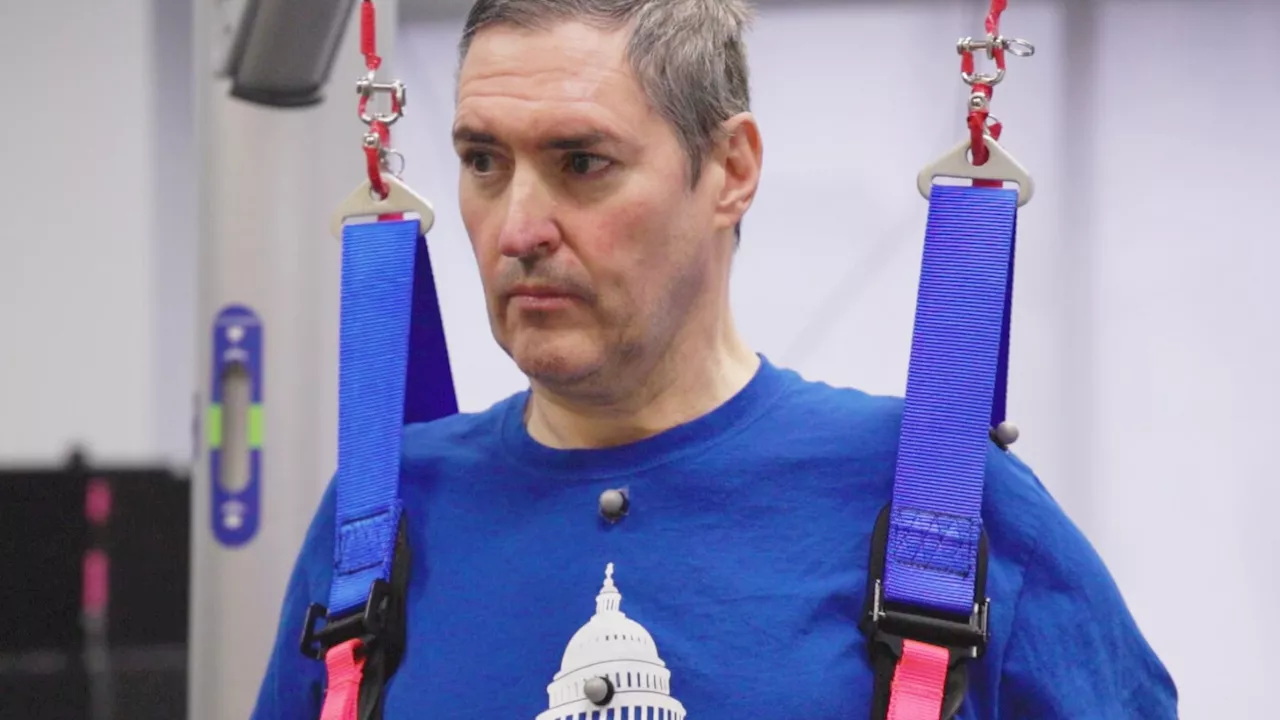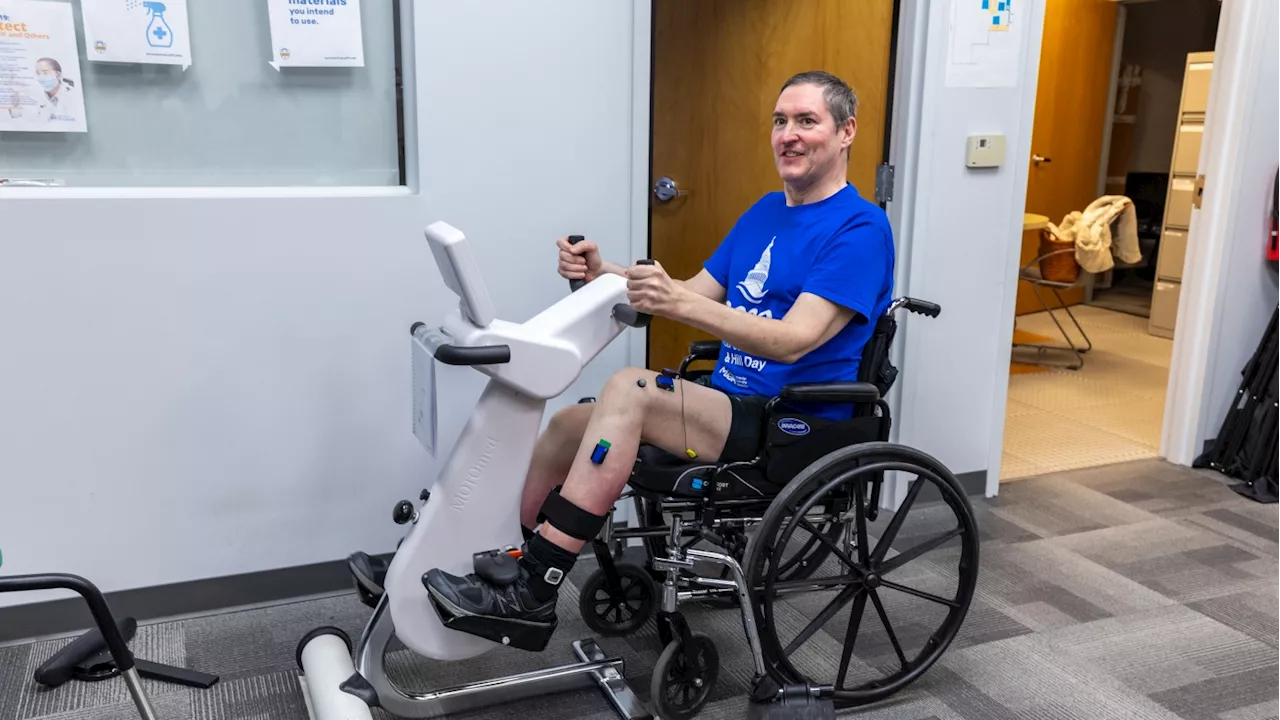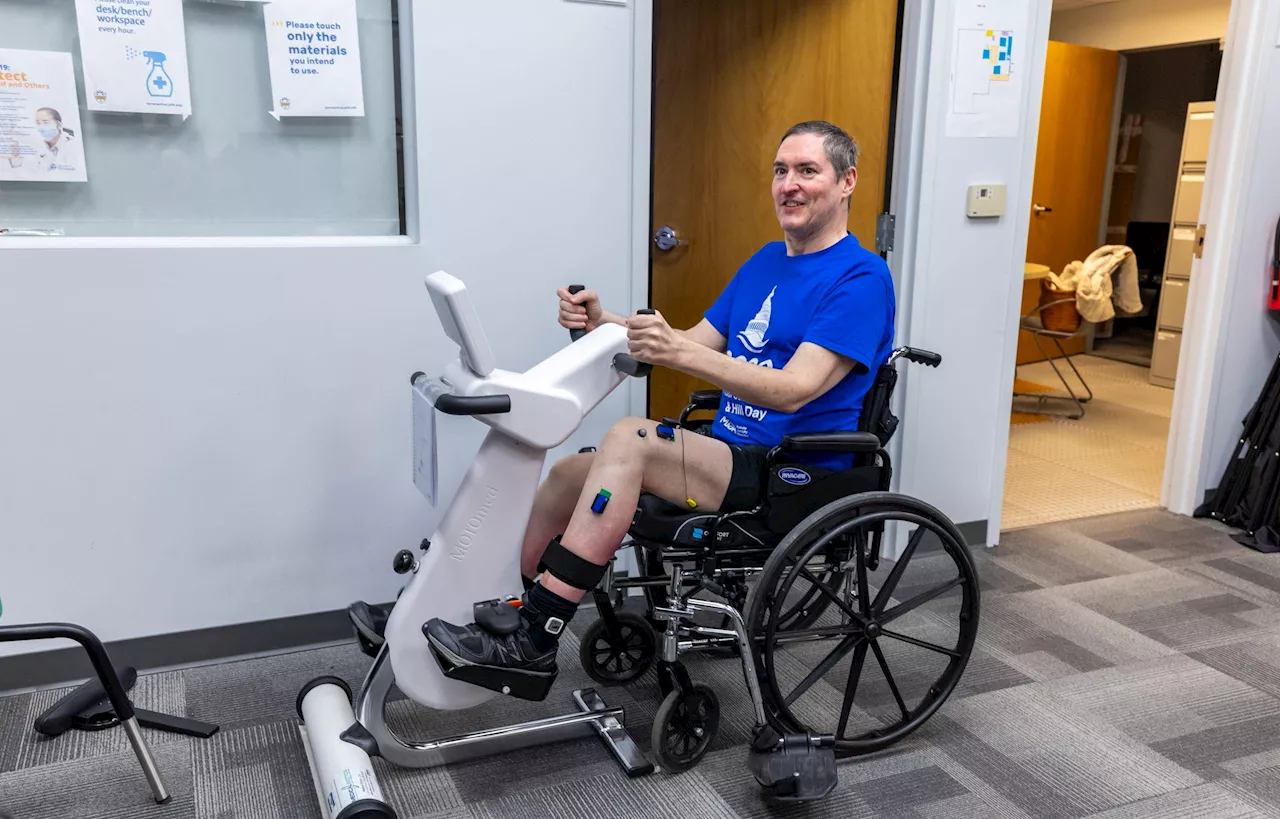A new study shows that electrical spinal cord stimulation can improve muscle function and walking ability in people with spinal muscle atrophy (SMA), a debilitating genetic disease. The research, published in Nature Medicine, suggests that this treatment could offer a significant breakthrough for individuals with SMA by addressing the underlying cause of their paralysis.
People with spinal muscle atrophy ( SMA ), an inherited neuromuscular disease, often experience muscle weakness that significantly impacts their movement capabilities. Recent research suggests that electrical spinal cord stimulation holds promise for improving muscle function in these patients, potentially even enabling them to walk again.
Studies conducted at the University of Pittsburgh School of Medicine have demonstrated that sessions of spinal cord stimulation can restore motor neuron activity and enhance leg muscle strength in individuals with SMA. These findings were published in Nature Medicine on February 5th. The study involved three participants with SMA who underwent spinal cord stimulation five times a week for four hours for a month. At the conclusion of the trial, all participants exhibited notable improvements in motoneuron function, reduced fatigue, and increased strength and walking ability. Specifically, they experienced an average 40% improvement in step length, up to 180% improvement in muscle strength, and a 26-minute increase in walking time. Doug McCullough, one of the participants who was experiencing advanced symptoms and difficulty walking, remarked on the positive impact of the treatment. He described his pre-treatment gait as a waddle due to weak hip flexors, but noted that the stimulation therapy significantly improved his walking speed, gait, and stamina. Although SMA is a progressive disease that typically worsens over time, the participants in this study demonstrated noticeable improvements during the four-week treatment period. They reported advancements in their activities of daily living, with one patient even stating that they were able to walk from their home to the lab without experiencing fatigue. Study co-author Elvira Pirondini, assistant professor of physical medicine and rehabilitation at Pitt School of Medicine, highlighted these positive outcomes, emphasizing the improvements observed in several clinical measures. The researchers view this study as a 'proof of concept' that offers hope for individuals with this genetic disability. It demonstrates the potential of spinal cord stimulation and other neuromodulation techniques as safe and effective treatment options for paralysis, particularly in cases where medications or gene therapy provide limited relief. The research team plans to conduct further clinical trials with additional SMA patients to rigorously assess the treatment's safety and efficacy. They also aspire to explore the application of this therapy for other neurodegenerative diseases, including ALS and Huntington's disease
Spinal Muscle Atrophy SMA Spinal Cord Stimulation Neuromodulation Paralysis Treatment Genetic Disease Walking Ability Motor Neuron Research Clinical Trial
United States Latest News, United States Headlines
Similar News:You can also read news stories similar to this one that we have collected from other news sources.
 Spinal Cord Stimulation Shows Promise for Muscle-Wasting DiseaseResearchers report promising results from a pilot study using spinal cord stimulation to treat spinal muscular atrophy (SMA). Three adults with the disease experienced improvements in muscle strength, function, and walking ability after receiving the treatment.
Spinal Cord Stimulation Shows Promise for Muscle-Wasting DiseaseResearchers report promising results from a pilot study using spinal cord stimulation to treat spinal muscular atrophy (SMA). Three adults with the disease experienced improvements in muscle strength, function, and walking ability after receiving the treatment.
Read more »
 Spinal Cord Stimulation Shows Promise in Treating Muscle-Destroying DiseaseA groundbreaking study at the University of Pittsburgh has shown that spinal cord stimulation therapy can significantly improve muscle strength and function in adults with spinal muscular atrophy (SMA). The therapy, which involves implanting electrodes over the lower spinal cord and delivering low levels of electrical stimulation, offers hope for patients who have long been resigned to the progressive nature of their disease.
Spinal Cord Stimulation Shows Promise in Treating Muscle-Destroying DiseaseA groundbreaking study at the University of Pittsburgh has shown that spinal cord stimulation therapy can significantly improve muscle strength and function in adults with spinal muscular atrophy (SMA). The therapy, which involves implanting electrodes over the lower spinal cord and delivering low levels of electrical stimulation, offers hope for patients who have long been resigned to the progressive nature of their disease.
Read more »
 Spinal Cord Stimulation Offers Hope for Muscle-Destroying DiseaseA new study shows that spinal cord stimulation can improve muscle function in people with spinal muscular atrophy (SMA). Three participants in a pilot study were able to stand and walk more easily after an implanted device zapped their spinal cord.
Spinal Cord Stimulation Offers Hope for Muscle-Destroying DiseaseA new study shows that spinal cord stimulation can improve muscle function in people with spinal muscular atrophy (SMA). Three participants in a pilot study were able to stand and walk more easily after an implanted device zapped their spinal cord.
Read more »
 Spinal cord stimulation restores neural function, targets key feature of progressive neurodegenerative diseaseBoosting communication between the spinal nerves and the muscles using the spinal cord stimulation reverses spinal muscle atrophy (SMA) progression and could be applied to other motoneuron diseases, including ALS.
Spinal cord stimulation restores neural function, targets key feature of progressive neurodegenerative diseaseBoosting communication between the spinal nerves and the muscles using the spinal cord stimulation reverses spinal muscle atrophy (SMA) progression and could be applied to other motoneuron diseases, including ALS.
Read more »
 Spinal Stimulation Offers Hope for Patients with Spinal Muscular AtrophyA groundbreaking study at the University of Pittsburgh School of Medicine has shown that daily spinal stimulation can significantly improve muscle strength and walking ability in people with spinal muscular atrophy (SMA).
Spinal Stimulation Offers Hope for Patients with Spinal Muscular AtrophyA groundbreaking study at the University of Pittsburgh School of Medicine has shown that daily spinal stimulation can significantly improve muscle strength and walking ability in people with spinal muscular atrophy (SMA).
Read more »
 Spinal stimulation restored muscles wasted by rare genetic disorderThree patients with spinal muscular atrophy had improved muscle strength and could walk farther after a month of daily spinal stimulation.
Spinal stimulation restored muscles wasted by rare genetic disorderThree patients with spinal muscular atrophy had improved muscle strength and could walk farther after a month of daily spinal stimulation.
Read more »
